-
 Bitcoin
Bitcoin $107,467.9126
1.26% -
 Ethereum
Ethereum $2,447.5288
-0.12% -
 Tether USDt
Tether USDt $1.0005
0.00% -
 XRP
XRP $2.1921
0.13% -
 BNB
BNB $647.2897
0.50% -
 Solana
Solana $144.8627
-0.37% -
 USDC
USDC $0.9996
-0.03% -
 TRON
TRON $0.2732
0.10% -
 Dogecoin
Dogecoin $0.1652
-0.18% -
 Cardano
Cardano $0.5700
-2.87% -
 Hyperliquid
Hyperliquid $37.0274
-1.81% -
 Bitcoin Cash
Bitcoin Cash $484.6957
0.19% -
 Sui
Sui $2.7354
-2.19% -
 Chainlink
Chainlink $13.1727
-1.49% -
 UNUS SED LEO
UNUS SED LEO $8.9978
-0.04% -
 Stellar
Stellar $0.2421
-2.33% -
 Avalanche
Avalanche $17.5633
-3.51% -
 Toncoin
Toncoin $2.8476
-1.94% -
 Shiba Inu
Shiba Inu $0.0...01166
-0.56% -
 Litecoin
Litecoin $85.1071
0.09% -
 Hedera
Hedera $0.1502
-2.96% -
 Monero
Monero $310.2774
-1.64% -
 Dai
Dai $0.9999
-0.01% -
 Polkadot
Polkadot $3.3584
-1.88% -
 Ethena USDe
Ethena USDe $1.0003
-0.04% -
 Bitget Token
Bitget Token $4.4443
2.90% -
 Pi
Pi $0.6242
14.04% -
 Uniswap
Uniswap $6.9774
-2.86% -
 Pepe
Pepe $0.0...09535
-5.05% -
 Aave
Aave $256.7574
-3.35%
Is it a reversal confirmation if the long lower shadow line at a low position opens high the next day?
A long lower shadow candle after a downtrend, especially with a bullish open the next day, may signal a potential reversal in cryptocurrency prices.
Jun 26, 2025 at 03:08 pm

Understanding Candlestick Patterns in Cryptocurrency Trading
In the world of cryptocurrency trading, candlestick patterns are widely used by traders to analyze market sentiment and predict future price movements. These visual representations provide insights into buying and selling pressures at specific price points. One such pattern that often catches the attention of traders is a long lower shadow line appearing after a downtrend, especially when followed by a bullish open the next day.
The long lower shadow (also known as a wick) indicates that despite initial selling pressure, buyers managed to push prices back up before the close. When this happens at a significant support level or after an extended decline, it may suggest a potential reversal signal.
What Does a Long Lower Shadow Indicate?
A candle with a long lower shadow typically means that during the period, sellers tried to drive the price down but were met with strong buying interest. This rejection of lower prices can be interpreted as a sign of increasing demand and weakening bearish momentum.
For example:
- In Bitcoin’s chart, if the price drops sharply but then recovers most of its losses within the same candle, forming a hammer-like shape, it's considered a potential reversal pattern.
- In Ethereum, similar formations near key moving averages or Fibonacci levels enhance the significance of the pattern.
It is crucial to note that while the presence of a long lower shadow might indicate a reversal, it should not be taken in isolation. Confirmation from subsequent candles and other technical indicators is essential for reliable analysis.
How Does an Opening Higher the Next Day Affect the Signal?
When the candle following the one with a long lower shadow opens significantly higher, it adds weight to the idea that bulls are regaining control. This behavior suggests that the previous low may have been a temporary bottom rather than a continuation of the downtrend.
Key observations include:
- A gap-up open the next day shows that buyers are entering the market aggressively.
- If the second candle closes above the high of the prior candle with the long lower shadow, it strengthens the case for a bullish reversal.
- Volume plays a critical role here; increased volume on the higher open reinforces the conviction behind the move.
However, even with these signs, it is still early to declare a full reversal unless additional confirmation appears over the next few sessions.
Combining Technical Indicators for Confirmation
To determine whether this pattern truly signals a reversal, traders often combine candlestick signals with other forms of technical analysis. Here are some tools commonly used alongside this pattern:
- Moving Averages: If the price moves above key moving averages like the 50-day or 200-day MA after the formation, it supports the reversal hypothesis.
- Relative Strength Index (RSI): An RSI value rising above 30 from oversold territory can confirm that downward momentum is fading.
- MACD Crossover: A bullish MACD crossover following the pattern provides further validation.
For instance, in altcoins like Binance Coin or Solana, seeing a long lower shadow candle accompanied by a bullish MACD crossover and a break above the 50 EMA could give more confidence in a reversal scenario.
Practical Steps to Confirm Reversal Using This Pattern
Here’s how you can practically apply this concept in your crypto trading strategy:
- Identify a clear downtrend in the price chart across multiple timeframes (e.g., daily and 4-hour charts).
- Look for a candle with a long lower shadow that appears after several bearish candles.
- Ensure the next candle opens significantly higher — ideally with a gap up.
- Check if the second candle closes above the midpoint or high of the prior candle.
- Verify volume increase on the second candle to confirm stronger participation from buyers.
- Use trendlines or support/resistance zones to contextualize the pattern’s location.
- Apply additional indicators like RSI or MACD to filter out false positives.
This process helps avoid premature conclusions based solely on a single candlestick pattern.
Common Pitfalls and Misinterpretations
Traders often fall into traps when interpreting candlestick signals without sufficient context. Some common mistakes include:
- Assuming that a long lower shadow always equals a reversal, regardless of where it occurs on the chart.
- Ignoring the importance of volume, which can reveal whether the reversal attempt has real strength behind it.
- Failing to consider broader market conditions — for instance, a bullish candlestick pattern during a strong bearish phase in the overall crypto market may not hold much weight.
- Not waiting for confirmation and entering trades too early, leading to whipsaws or fakeouts.
Avoiding these pitfalls requires discipline, patience, and the use of multi-layered analysis techniques.
Frequently Asked Questions
Q: Can a long lower shadow candle appear in uptrends and what does it mean?
Yes, a long lower shadow candle can also appear in uptrends. In such cases, it may indicate a temporary pullback or consolidation rather than a reversal. It suggests that although bears tried to push the price down, buyers quickly stepped in to defend the level.
Q: Is it enough to rely only on candlestick patterns for trading decisions?
No, candlestick patterns should be used in conjunction with other tools such as volume analysis, moving averages, and oscillators. Relying solely on candlesticks increases the risk of misinterpreting market dynamics.
Q: What is the difference between a hammer and a shooting star candlestick?
A hammer has a long lower shadow and appears at the bottom of a downtrend, signaling a potential reversal. A shooting star has a long upper shadow and appears at the top of an uptrend, indicating a possible bearish reversal.
Q: How important is the length of the lower shadow in determining the strength of a reversal signal?
The length of the lower shadow matters greatly. A longer shadow implies stronger rejection of lower prices and thus a more significant reversal signal. Generally, the shadow should be at least twice the length of the body for the pattern to be meaningful.
Disclaimer:info@kdj.com
The information provided is not trading advice. kdj.com does not assume any responsibility for any investments made based on the information provided in this article. Cryptocurrencies are highly volatile and it is highly recommended that you invest with caution after thorough research!
If you believe that the content used on this website infringes your copyright, please contact us immediately (info@kdj.com) and we will delete it promptly.
- BNB Price Check: Can Binance Coin Reserves Fuel a Rally to $800?
- 2025-06-26 20:25:12
- PEPD, Memes, and Ethereum: A New Era of Meme Utility?
- 2025-06-26 20:25:12
- DOGE, BlockDAG, and Coin Airdrops: The New Wave of Crypto Opportunities
- 2025-06-26 18:45:12
- Neo Pepe and the Crypto Presales Popping in June 2025
- 2025-06-26 18:45:12
- Bitcoin, DeFi Tokens, and Relist Moves: What's Hot in Crypto Right Now
- 2025-06-26 18:30:11
- Binance, Bitcoin, and Altcoins: Navigating the Crypto Landscape
- 2025-06-26 19:05:12
Related knowledge
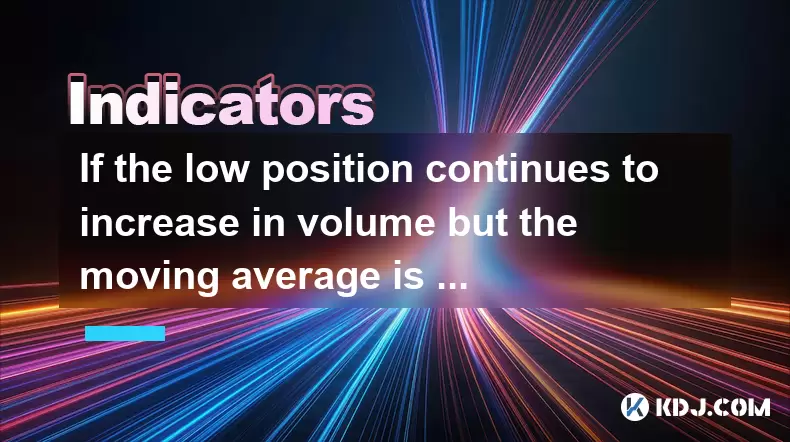
If the low position continues to increase in volume but the moving average is still short, should we wait and see?
Jun 26,2025 at 08:07pm
Understanding the Scenario: Low Position with Increasing VolumeIn the cryptocurrency market, traders often encounter situations where a particular asset is trading at a relatively low price level (referred to as a 'low position'), yet there is a noticeable increase in trading volume. This phenomenon can be confusing because it suggests that more market ...
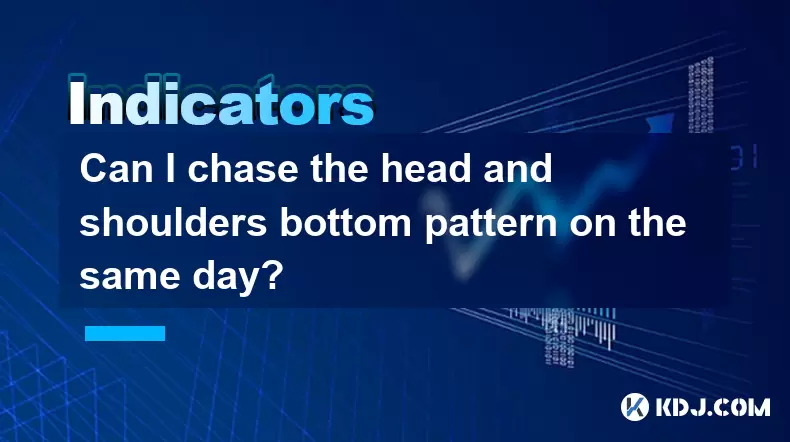
Can I chase the head and shoulders bottom pattern on the same day?
Jun 26,2025 at 06:14pm
Understanding the Head and Shoulders Bottom Pattern in Cryptocurrency TradingThe head and shoulders bottom pattern, also known as the inverse head and shoulders, is a reversal chart pattern commonly observed in cryptocurrency price charts. It signals a potential shift from a downtrend to an uptrend. The structure consists of three distinct lows: the lef...

What should I do if the 10-day line turns downward but the monthly line is still upward?
Jun 26,2025 at 08:56pm
Understanding the 10-Day and Monthly Moving AveragesIn cryptocurrency trading, moving averages are among the most widely used technical indicators. The 10-day moving average (MA) reflects short-term price trends, while the monthly moving average, often calculated over 30 days, represents long-term market sentiment. When the 10-day line turns downward, i...
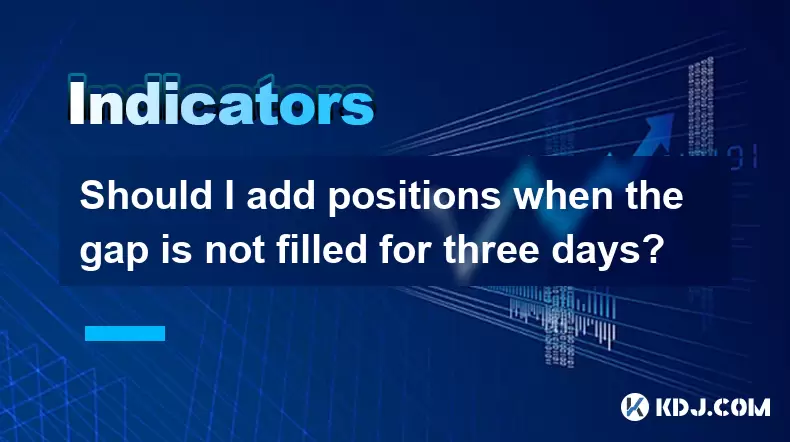
Should I add positions when the gap is not filled for three days?
Jun 26,2025 at 07:49pm
Understanding the Concept of Gaps in Cryptocurrency TradingIn cryptocurrency trading, a gap occurs when the price of an asset opens significantly higher or lower than its previous closing price, with no trading activity taking place in between. This phenomenon is common due to the 24/7 nature of crypto markets and external events such as news releases, ...
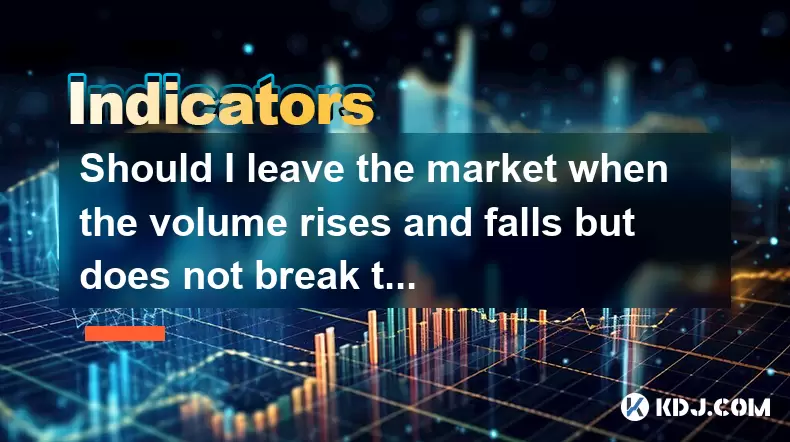
Should I leave the market when the volume rises and falls but does not break the 5-day line?
Jun 26,2025 at 06:08pm
Understanding Market Volume and the 5-Day Moving AverageWhen traders talk about market volume, they're referring to the total number of shares or contracts traded during a specific period. In cryptocurrency trading, volume plays a crucial role in confirming trends and predicting potential reversals. The 5-day moving average (5DMA) is a short-term indica...
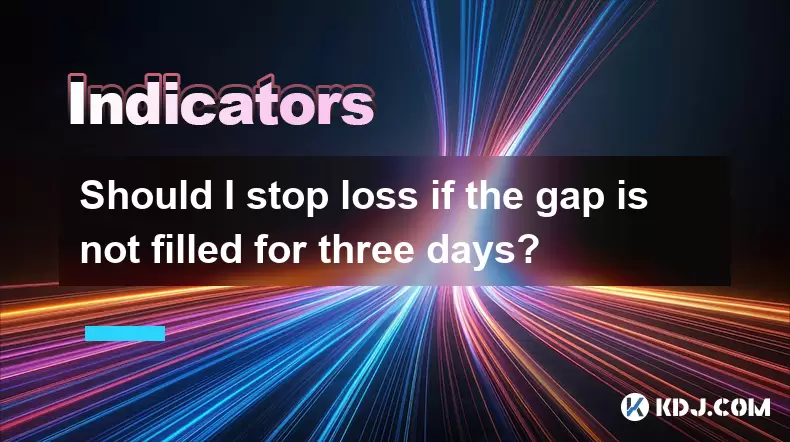
Should I stop loss if the gap is not filled for three days?
Jun 26,2025 at 06:35pm
Understanding Gaps in Cryptocurrency TradingIn cryptocurrency trading, gaps refer to areas on a price chart where the asset's price jumps from one level to another without any trading occurring at the intermediate levels. These gaps can appear due to sudden market movements, often influenced by news events, macroeconomic data releases, or shifts in inve...

If the low position continues to increase in volume but the moving average is still short, should we wait and see?
Jun 26,2025 at 08:07pm
Understanding the Scenario: Low Position with Increasing VolumeIn the cryptocurrency market, traders often encounter situations where a particular asset is trading at a relatively low price level (referred to as a 'low position'), yet there is a noticeable increase in trading volume. This phenomenon can be confusing because it suggests that more market ...

Can I chase the head and shoulders bottom pattern on the same day?
Jun 26,2025 at 06:14pm
Understanding the Head and Shoulders Bottom Pattern in Cryptocurrency TradingThe head and shoulders bottom pattern, also known as the inverse head and shoulders, is a reversal chart pattern commonly observed in cryptocurrency price charts. It signals a potential shift from a downtrend to an uptrend. The structure consists of three distinct lows: the lef...

What should I do if the 10-day line turns downward but the monthly line is still upward?
Jun 26,2025 at 08:56pm
Understanding the 10-Day and Monthly Moving AveragesIn cryptocurrency trading, moving averages are among the most widely used technical indicators. The 10-day moving average (MA) reflects short-term price trends, while the monthly moving average, often calculated over 30 days, represents long-term market sentiment. When the 10-day line turns downward, i...

Should I add positions when the gap is not filled for three days?
Jun 26,2025 at 07:49pm
Understanding the Concept of Gaps in Cryptocurrency TradingIn cryptocurrency trading, a gap occurs when the price of an asset opens significantly higher or lower than its previous closing price, with no trading activity taking place in between. This phenomenon is common due to the 24/7 nature of crypto markets and external events such as news releases, ...

Should I leave the market when the volume rises and falls but does not break the 5-day line?
Jun 26,2025 at 06:08pm
Understanding Market Volume and the 5-Day Moving AverageWhen traders talk about market volume, they're referring to the total number of shares or contracts traded during a specific period. In cryptocurrency trading, volume plays a crucial role in confirming trends and predicting potential reversals. The 5-day moving average (5DMA) is a short-term indica...

Should I stop loss if the gap is not filled for three days?
Jun 26,2025 at 06:35pm
Understanding Gaps in Cryptocurrency TradingIn cryptocurrency trading, gaps refer to areas on a price chart where the asset's price jumps from one level to another without any trading occurring at the intermediate levels. These gaps can appear due to sudden market movements, often influenced by news events, macroeconomic data releases, or shifts in inve...
See all articles
























































































